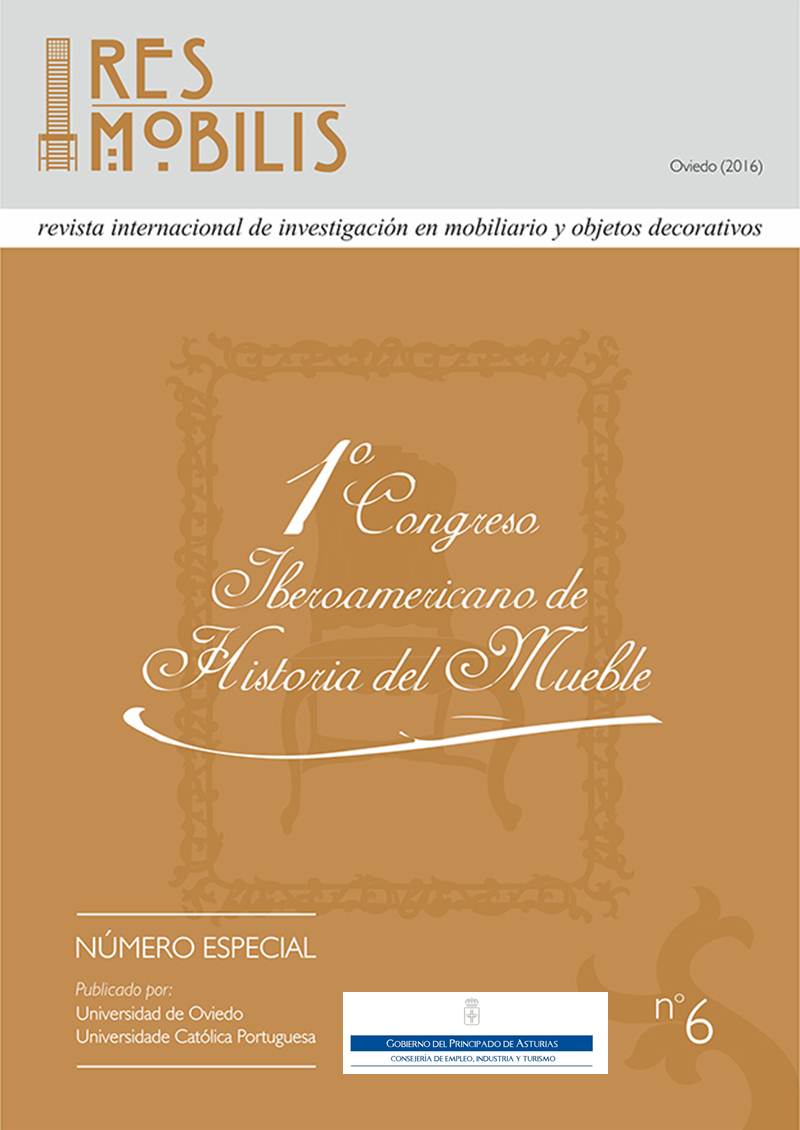Abstract
As part of a conservation and restoration intervention, a material study of a folding screen was made, with methods of examination and analysis that aims to clarify its condition, the changes that has undergone and its origin and date of manufacture. Extensive and profound aesthetic and iconographic modifications were found and were identified techniques and materials that point to an Eastern origin, particularly Chinese, in combination with techniques and materials that were not common in the East, but in the West. The mixture of Prussian blue and orpiment used in green areas allowed us to conclude that it is unlikely that the screen was painted before the nineteenth century.
References
ABREU, Pedro Cancela de, “Técnicas de construção de objectos namban”, in VINHAIS, Luísa; WELSH, Jorge (dir.), Depois dos Bárbaros II. Arte Namban para os Mercados Japonês, Português e Holandês, Lisboa, Jorge Welsh, 2008.
BAILEY, Kate, “A note on Prussian blue in nineteenth-century Canton”, Studies in Conservation, vol. 57, nº 2, London, 2012.
ERNST, Richard R., “In situ Raman microscopy applied to large Central Asian paintings”, Journal of Raman Spectroscopy, vol. 41, nº 3, 2010.
ESCOBAR, Nazaré Garcia (dir.), Biombo de Papel Sino-Japonês, Lisboa, Instituto Português de Conservação e Restauro, 2004.
FITZHUGH, Elisabeth West, “A database of pigments on Japanese ukiyo-e paintings in the Freer Gallery of Art”, in FITZHUGH, Elisabeth West; LEONA, Marco; WINTER, John (dir.), Pigments in Later Japanese Paintings, Washington, Freer Gallery of Art, 2003.
GETTENS, Rutherford J., KÜHN, Hermann; CHASE, W. T., “Lead white”, in ROY, Ashok (dir.), Artists' Pigments. A Handbook of Their History and Characteristics, vol. 2, Washington, National Gallery of Art, 1993.
INCARVILLE, Pierre d', Arts, Métiers et Cultures de la Chine, Paris, 1814.
RÉAU, Louis, Iconografia del Arte Cristiano, Barcelona, Ediciones del Serbal, 1997, tomo II, vol. III.
RONDOT, Natalis, “Une promenade dans Canton. La manufacture de laque d’Hip-qua et l’atelier de tabletterie de Ta-Yu-Tong”, Journal Asiatique, vol. 11, Paris, 1848.
SILVA FERREIRA, Rui, CURVELO, Alexandra, PAIS, Alexandre, ESCOBAR, Nazaré Garcia (dir.), Biombo Lacado, Lisboa, Instituto Português de Conservação e Restauro, 2004.
VAN DER REYDEN, Dianne, “Technology and treatment of a folding screen: comparison of oriental and western techniques”, in MILLS, John S., SMITH, Perry; YAMASAKI, Kazuo (dir.), The Conservation of Far Eastern Art, London, IIC, 1988.
WINTER, John, “The identification of indigo and Prussian blue on Japanese Edo-Period paintings”, in FITZHUGH, E. W., et al., Pigments in Later Japanese Paintings.
WINTER, John, East Asian Paintings. Materials, Structures and Deterioration Mechanisms, London, Archetype Publications, 2008.

